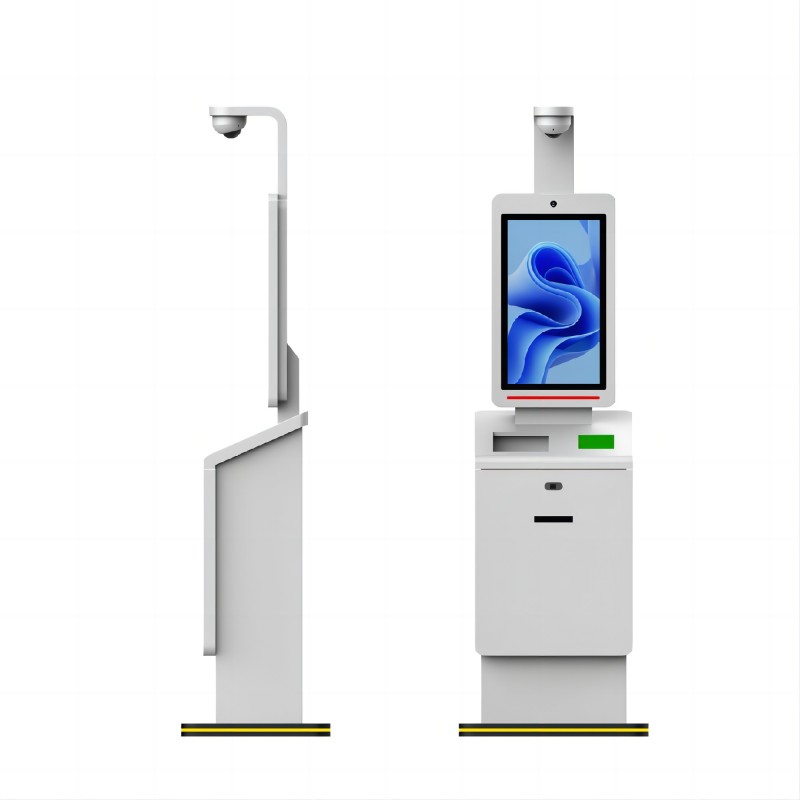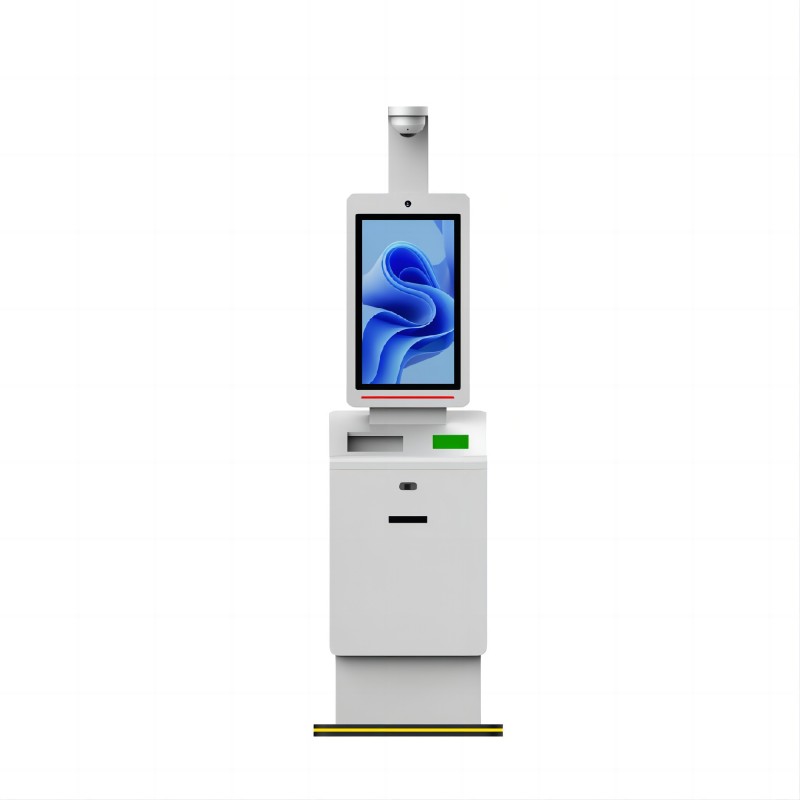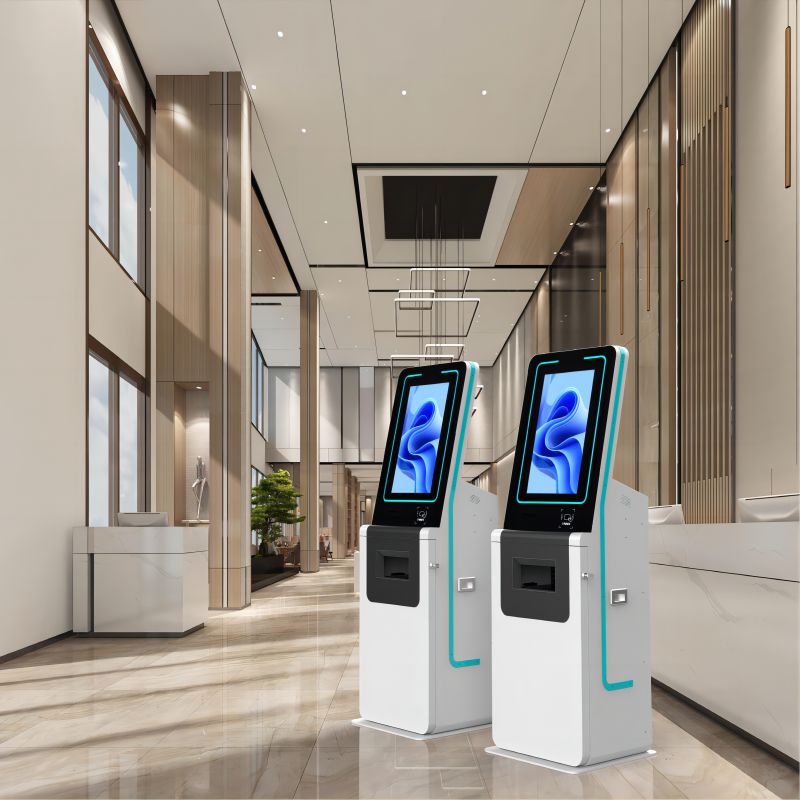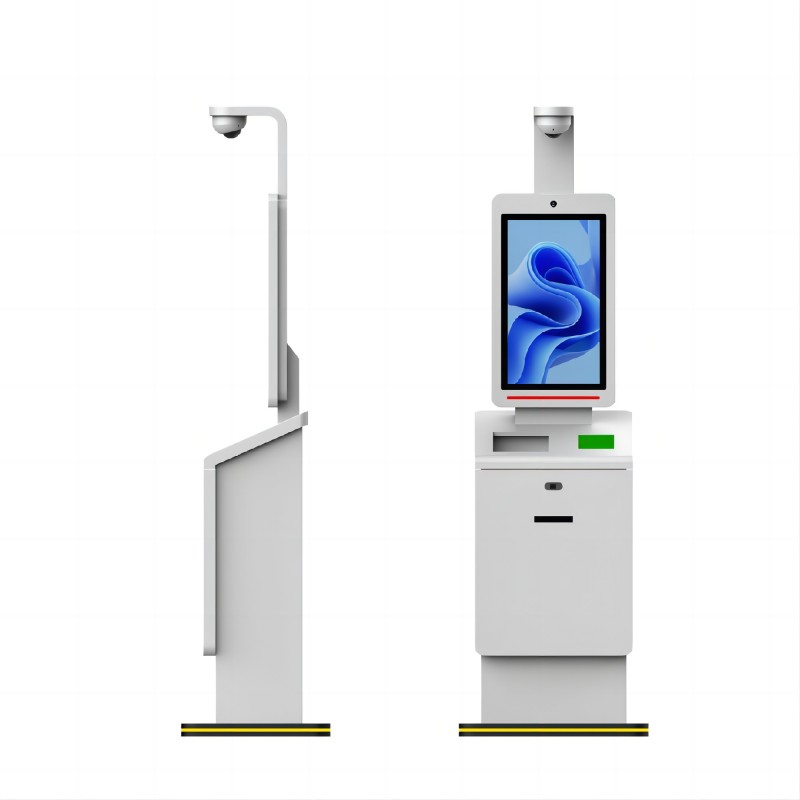
| Specification | Details | Manufacturing Process | Details |
|---|---|---|---|
| Display | 17-32 inch high-resolution touchscreen | Design and Prototyping | Initial design, 3D modeling, and prototype development |
| Printer | Thermal printer for boarding passes, receipts, and baggage tags | Component Sourcing | Sourcing of displays, printers, scanners, and other parts |
| Barcode/Passport Scanner | Integrated 2D barcode scanner and passport reader | Assembly | Assembling of components including screen, scanner, and printer |
| Card Reader | EMV-compliant chip, magnetic stripe, and contactless payment options | Software Integration | Installing and configuring software for airport/airline systems |
| Network Connectivity | Ethernet, Wi-Fi, and cellular options for secure data processing | Testing | Rigorous testing for functionality, reliability, and security |
| Audio System | Built-in speakers for audio prompts and multilingual support | Quality Control | Final inspection and quality assurance checks |
| Operating System | Windows, Linux, or custom OS with integration capabilities | Packaging and Shipping | Packaging for transport and delivery to airport locations |
| Power Supply | Uninterruptible Power Supply (UPS) for continuous operation | Installation | On-site installation and setup at the airport |
| Dimensions | Typically 60-70 inches tall, 20-30 inches wide | Maintenance and Support | Ongoing support for maintenance and software updates |
| Weight | Approximately 100-150 kg depending on configuration | ||
| Accessibility Features | ADA-compliant height, braille keypads, and support for multiple languages |
Kiosk at airport is best utilized to streamline various passenger processes and enhance overall operational efficiency. They are particularly effective during peak travel times when long lines and wait times at check-in counters can cause frustration. By allowing passengers to self-check-in, print boarding passes, select or change seats, and tag their luggage, kiosks help alleviate congestion and expedite the boarding process.
Kiosk is also beneficial for providing real-time flight information, directing passengers to their gates, and facilitating payment for additional services such as excess baggage or seat upgrades. They are ideal in situations where quick and independent passenger processing is needed, reducing reliance on airline staff and enabling them to focus on more complex customer service tasks. Furthermore, kiosks improve accessibility by offering multilingual support and ADA-compliant features, making travel more convenient for all passengers.
Overall, the strategic deployment of kiosks at airports helps manage high passenger volumes more effectively, enhances the travel experience, and supports smooth and efficient airport operations.

Kiosks at airports serve a variety of applications that significantly improve the efficiency and convenience of air travel. Primarily, they facilitate self-check-in, allowing passengers to print boarding passes, select seats, and manage luggage without queuing at traditional counters. This self-service capability speeds up the check-in process and reduces waiting times, especially during peak travel periods.
Additionally, airport kiosks are used for baggage tagging, where passengers can print and affix tags to their checked luggage. They also provide real-time flight information, such as departure times and gate assignments, helping travelers stay informed and navigate the terminal more effectively. Some kiosks offer payment processing for additional services like excess baggage fees or seat upgrades, streamlining the transaction process.
The benefits of these kiosks are substantial. They reduce the workload on airline staff, allowing them to focus on more complex customer service tasks. By minimizing the need for manual check-in processes, kiosks lower operational costs for airports and airlines. Their ability to operate 24/7 ensures continuous service, enhancing passenger satisfaction and operational efficiency. Moreover, kiosks equipped with multilingual support and accessibility features make air travel more user-friendly for a diverse range of passengers, contributing to an improved overall travel experience.

| Type | Size (Approx.) | Price Range | Description |
|---|---|---|---|
| Check-In Kiosk | 17-24 inch touchscreen | $5,000 - $15,000 | Used for passenger check-in, seat selection, and boarding pass printing. Typically placed near entrance and check-in counters. |
| Baggage Tag Kiosk | 24-32 inch touchscreen | $10,000 - $20,000 | Designed for printing and dispensing baggage tags, often integrated with check-in functionalities. |
| Payment Kiosk | 17-22 inch touchscreen | $7,000 - $18,000 | Facilitates payment for services such as baggage fees, upgrades, and ticket changes. Often includes card readers and cash handling. |
| Information Kiosk | 19-32 inch touchscreen | $4,000 - $12,000 | Provides passengers with flight information, maps, and other essential details. Usually located throughout the terminal. |
| Wayfinding Kiosk | 32-55 inch touchscreen | $8,000 - $25,000 | Large interactive screens that help passengers navigate the airport, find gates, restaurants, and other amenities. |
| Self-Registration Kiosk | 17-24 inch touchscreen | $5,000 - $12,000 | Allows passengers to register for frequent flyer programs, update information, or check loyalty points. |
Assess Operational Needs: Identify the specific requirements of your airport, such as check-in, baggage handling, or wayfinding. This will help determine the types and quantities of kiosks needed.
Consider Customization: Look for kiosks that can be customized to fit your branding, user interface needs, and integration with existing systems. Customization can enhance passenger experience and operational efficiency.
Evaluate Durability and Maintenance: Ensure the kiosks are built to withstand heavy use and consider the ease of maintenance. Durable kiosks reduce long-term costs associated with repairs and replacements.
Compare Vendors: Research and compare different vendors, focusing on the quality of the hardware, software capabilities, support services, and pricing. Choose a vendor with a strong reputation and positive reviews.
Plan for Future Expansion: Consider kiosks that can be easily upgraded or expanded as your airport grows. Scalable solutions will save money in the long run by adapting to increasing passenger volumes.
Budget for Installation and Training: Factor in the costs of installation, integration with existing systems, and training staff to operate and maintain the kiosks. Proper implementation ensures smooth operation from the start.
Consider Passenger Demographics: Choose kiosks with multilingual support, accessibility features, and intuitive designs to cater to diverse passenger needs, enhancing user satisfaction and ease of use.








What did our happy clients say?
Extremely satisfied with the airport kiosk we purchased! It’s reliable and user-friendly. Thanks to the manufacturer for excellent support. Highly recommend their products!
The airport kiosks have exceeded our expectations in efficiency and ease of use. A big thanks to the manufacturer for their top-notch service. Definitely recommend!
We’re thrilled with the performance of our new airport kiosk. The quality and functionality are superb. Thank you to the manufacturer for their outstanding work. Highly recommended!
The airport kiosk has significantly improved our operations. The manufacturer’s attention to detail and support were exceptional. We highly recommend their services!